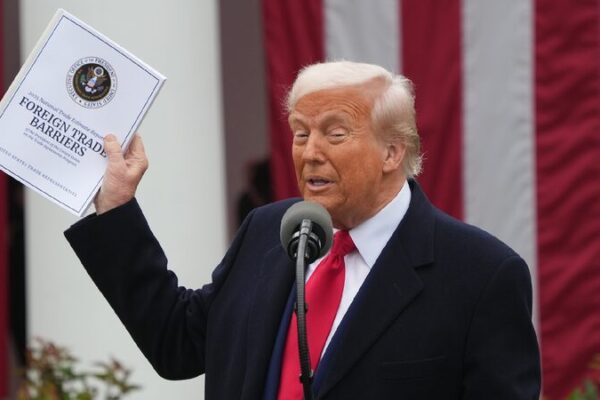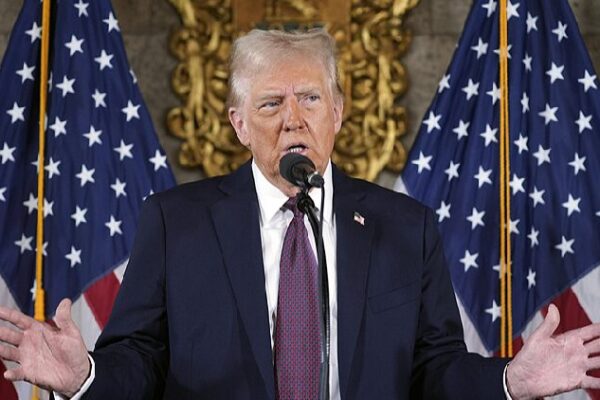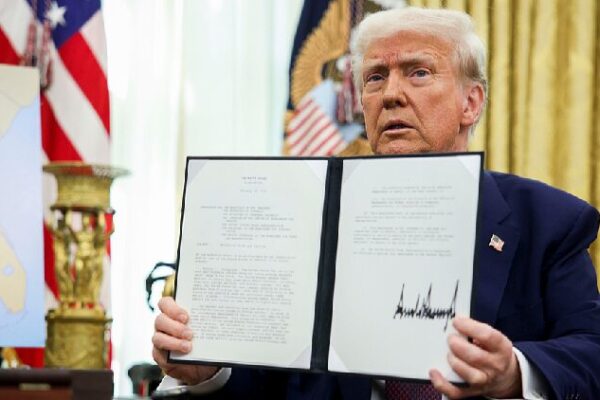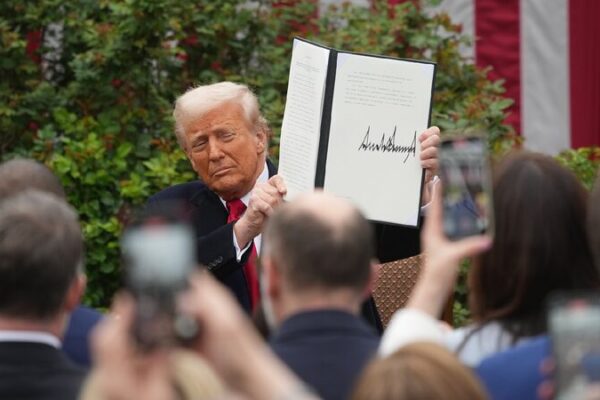U.S. President Donald Trump’s new tariff formula is causing a stir worldwide, hitting some of the poorest nations the hardest.
The formula, which calculates tariffs based on a country’s trade surplus with the United States, is simple yet impactful. It takes the U.S. goods trade deficit with a nation, divides it by that country’s exports to the U.S., turns it into a percentage, and then halves that figure to produce the U.S. “reciprocal” tariff, with a minimum rate of 10 percent.
This method has led to unexpectedly high tariffs on countries that export goods to the U.S. but import little in return, often because they cannot afford to do so. For example, Madagascar, one of the poorest countries in the world with a GDP per capita of just over $500, now faces a 47 percent tariff on its $733 million worth of exports to the U.S., which include vanilla, metals, and apparel.
“The biggest losers are Africa and Southeast Asia,” said John Denton, head of the International Chamber of Commerce. “This move risks further damaging the development prospects of countries already facing worsening terms of trade.”
In Southeast Asia, nations like Vietnam and Thailand have been hit harder than expected. Vietnam, slapped with a 46 percent tariff, has called for talks with Washington to reconsider the “unfair” U.S. duties. Thailand’s Prime Minister Paetongtarn Shinawatra said the country would pursue negotiations to reduce the 37 percent rate it faces, far greater than the 11 percent it had expected.
“We have to negotiate and get into details,” said Prime Minister Paetongtarn Shinawatra. “We can’t let it get to where we miss our GDP target.”
Vietnam’s trade minister, Nguyen Hong Dien, expressed concern over the tariffs. “Vietnam’s export-driven growth model has been highly successful, attracting multinational companies,” said Leif Schneider, head of international law firm Luther in Vietnam. “However, a 46 percent U.S. tariff would directly challenge this model.”
Africa is facing similar challenges. Lesotho, a small Southern African kingdom with a GDP of just over $2 billion, now faces a 50 percent reciprocal tariff—the highest on Trump’s list. “The 50 percent reciprocal tariff introduced by the U.S. government is going to kill the textile and apparel sector in Lesotho,” said Thabo Qhesi, an economic analyst based in Maseru. The textile sector, with some 40,000 workers, is Lesotho’s biggest private employer and accounts for roughly 90 percent of its manufacturing employment and exports.
The new tariffs also signal the end of the African Growth and Opportunity Act (AGOA) trade deal, which was designed to help African economies develop through preferential access to U.S. markets. Lesotho’s trade minister, Mokhethi Shelile, said officials are seeking to engage with the United States to clarify why they were included in the list of such high tariffs and to maintain the current market conditions.
Moreover, Cambodia, Laos, and Myanmar—the three least developed countries in Southeast Asia—are facing tariff rates of 49 percent, 48 percent, and 44 percent, respectively. These high tariffs could hinder their economic growth and development efforts.
As these developing nations grapple with the potential economic fallout, there is a growing call for dialogue and reconsideration of the tariff rates. The global community watches closely, as the impact of these tariffs extends beyond trade balances, affecting livelihoods and the futures of some of the world’s most vulnerable populations.
Reference(s):
Trump's tariff formula confounds the world, hitting the poor hardest
cgtn.com








